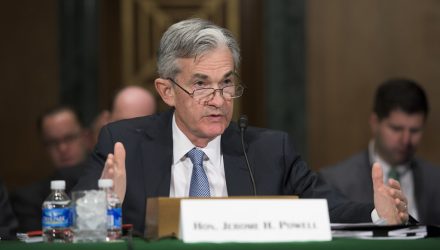The reason to reduce the balance sheet is two-fold: economic conditions have improved dramatically, reducing the need for intervention, and central banks need to recover some margin of action in case their intervention is warranted again. The risk comes from drying up liquidity, which is why both the Fed and the ECB have been extremely careful in the steps they have taken, cautiously announcing their moves so that markets are not caught by surprise. What seems clear now is that the entire process will take years, meaning it will greatly define Mr. Powell’s four-year term. If financial-market stability has heavily relied on the Fed’s loose monetary approach, then it follows that the end of QE has to be conducted with extreme care. Governments, businesses, and households have benefitted from very low interest rates. What will happen when those rates go up? The Fed has already started the process of hiking interest rates (four times in the last two years), plus it has the advantage of a much smaller balance sheet relative to GDP than its European counterpart (23% of GDP versus 60% of GDP).
The main question is whether the scaling back of QE in the US can be done without upsetting markets. We believe this is possible, especially in light of two facts. First, much better economic conditions mean that QE is far less needed, and, secondly, the fact that the ECB and, especially, the Bank of Japan will continue with their asset-purchase programs in 2018 means that liquidity will continue to grow. But there is a downside, of course. As the cost of financing goes up, we may find that some companies are financially unviable in this new environment. Moreover, the price of financial assets could be affected. Higher interest rates always run the risk of popping bubbles. This risk is probably higher for banks in Europe, some of which are heavily exposed to public debt. Especially risky is that of so-called peripheral countries. At the same time, banks everywhere will benefit from reduced liquidity and a higher cost of borrowing. One of the problems with prolonged near-zero rates is the pressure they put on bank profits, yet another reason for ending QE.
As for inflation, even though the Fed targets a rate of 2%, the fact that the core inflation is considerably below the target may end up being a blessing for Mr. Powell. If inflation were high, the pressure to remove the monetary stimulus would be much greater. But in the absence of inflation, there is ample room to time the scaling back of QE according to other variables. Additionally, debt levels have ballooned, meaning interest rates will have to remain low for a long time. And finally, the fact that rates will remain at zero or near-zero levels elsewhere (think Eurozone and Japan, e.g.) will make it harder for the Fed to increase rates too much.
If inflation were to suddenly pick up – and there are analysts who believe there are pockets of latent inflation in the economy –, things would become much more complicated. The tightening of monetary policy would have to be harder and faster. The question is whether it would be wise to preempt this scenario with higher rates, with the obvious risk of slowing down economic activity and going back to a near-deflationary state. Inflation estimates are not the most reliable ones right now. Even Janet Yellen, the current Fed chair, has been very explicit about the uncertainty surrounding expected inflation.
On the other hand, rolling back QE slowly is not without its risks. If another crisis erupted, a Fed with an oversized balance sheet and very low interest rates would have little margin to maneuver.
Luckily for Mr. Powell, the QE program in the US, unlike in Europe, was not meant to give governments time to enact deep structural reforms to address problems like fiscal deficits, pension reform, and corruption. The ECB will have the added problem that many of those reforms have not happened (in no small part because these low financing costs have propelled growth), which makes similar future problems more likely. The fiscal union in the US is another advantage for Mr. Powell.
When it comes to employment, the picture looks better, at least in the short-run. The Congressional Budget Office (non-partisan) estimated at the beginning of 2017 that, within the next two years, there would be a continued expansion of the economy, such that virtually all unused resources would be put to work. The slack in the labor market should be gone in 2018, with hourly wages going up. Only after this period should we start to see slower growth. However, this narrowing in the output gap should put upward pressure on both inflation and interest rates. All in all, we believe that an orderly reduction of the Fed’s balance sheet is possible and, absent major surprises, should have a modest effect on the world’s economy.
Conclusion
The nomination of Jerome Powell to the Fed should be taken as good news by markets everywhere. A pragmatist who brings deep knowledge of financial markets to the job, he should continue with the measured and careful approach the current Fed chair has followed. This should apply to both interest-rate policy and the reduction of the Fed’s $4.5 trillion balance sheet. This means predictable and gradual rate hikes in the future, as well as a slow decrease in the total assets held by the Fed. The latter should, absent major surprises, have a modest effect on the world’s economy.
This article was written by Innealta Capital, a participant in the ETF Strategist Channel.

